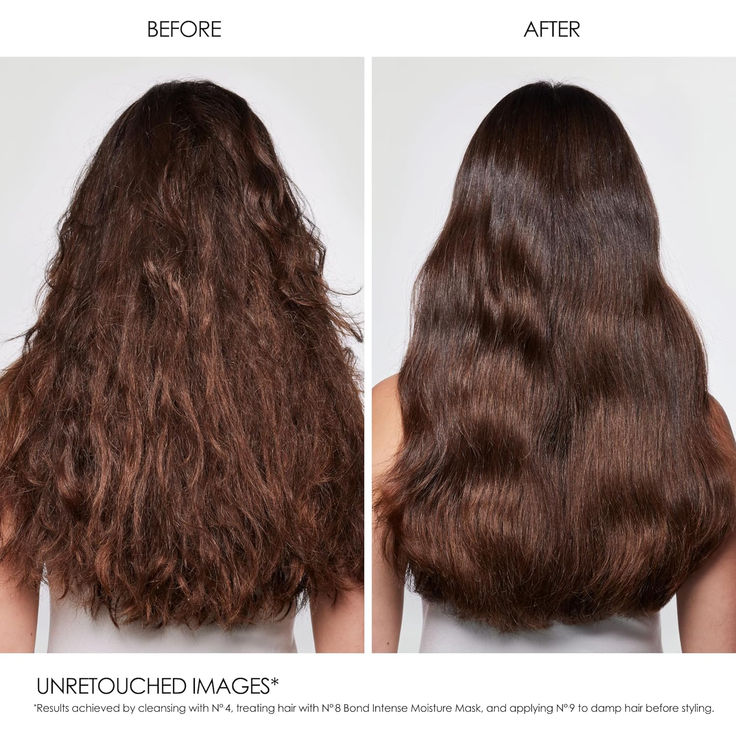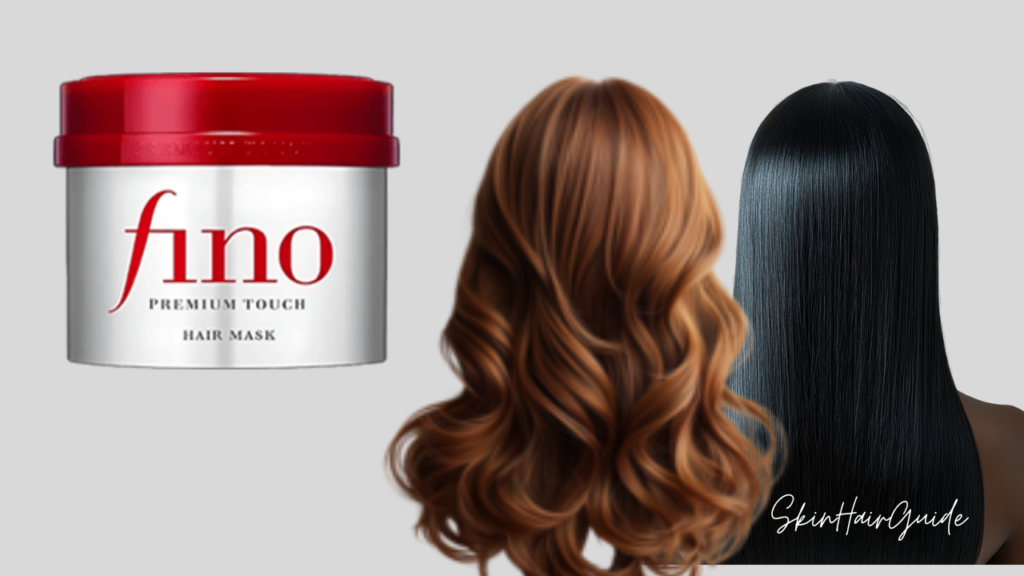People often skip hair masks, thinking they’re just an extra step. But honestly, they can make a big difference. No matter your hair type—long, short, thick, or fine—giving it some extra care with the right mask can really pay off. And the best part? Learning how to use a hair mask isn’t complicated—it just takes a few simple steps and a little consistency. In this guide, we’ll walk through the different types of masks, how to use a hair mask the right way, and why they deserve a regular spot in your hair care routine.
Why You Actually Do Need a Hair Mask (Even If Your Hair Feels Fine)
Hair masks aren’t just a backup plan for when your hair’s a frizzy mess or totally fried from heat styling. They’re more like that weekly recharge your strands quietly hope for. Whether your hair is curly, straight, colored, or natural, it goes through a lot—weather, styling, brushing, and just daily life.
The truth is, even if your hair looks okay, it could still use a little extra love. This is when a quality hair mask can work wonders. It gives your hair deep moisture, softens it up, and brings back that bounce and shine.
You don’t have to spend a ton either. It’s all about finding something that works for your hair and your budget—something you’ll actually want to use every week. Once you get into the habit, it won’t feel like a chore. It’ll feel more like your little reset moment.
Got it! Here’s a warmer, more natural version using “I” and easy, human language:
Types of Hair Masks: Which One Is Right for You?
I know picking the right hair mask can feel a little confusing. There are so many out there, and each one promises something different. But once you understand what they do, it gets way easier. Here are the three I’ve tried and loved (or learned from), along with what worked, what didn’t, and how to use them.
1. Traditional Hair Masks
This is the kind I reach for when my hair just feels tired, dry, or needs a reset. They’re thick, creamy, and packed with moisture.
How to use:
Shampoo first, then apply the mask to damp hair (mid-lengths to ends), leave it on for 5–20 minutes, and rinse.
Pros:
- Makes my hair feel soft and smooth
- Works well for dryness and frizz
- Easy to use during a weekly self-care routine
Cons:
- Can feel heavy on fine or oily hair
- Needs to be rinsed well, or it can weigh hair down
2. Bond Repair Masks
These are my go-to when my hair’s been through heat styling or color damage. Bond repair masks (like Olaplex) actually help rebuild broken hair from the inside out.
How to use:
Use on damp, unwashed hair. Leave it in for about 10–20 minutes (or more, depending on the product), then shampoo and condition as usual.
Pros:
- Helps strengthen weak, damaged hair
- Reduces breakage over time
- Definitely a must if you bleach or color your hair.
Cons:
- Takes extra time
- Can be pricey compared to regular masks
3. Glossing Treatments
When you want your hair to look extra shiny for a night out or just need a little boost, this is what you should grab. It’s not a deep treatment, but it makes your hair look healthy in minutes.
How to use:
Use after shampooing. Apply to damp hair, leave it on for just a minute or two, and rinse.
Pros:
- Adds instant shine and smoothness
- Makes hair look “done” without much effort
- Perfect for when you’re in a rush
Cons:
- Doesn’t repair or deeply condition
- Shine usually fades after a few washes
How to Use a Hair Mask Effectively
Here’s a simple step-by-step guide, recommended by Alexandra, a beauty influencer with over 3 million followers, to apply your hair mask like a pro!
Step 1: Wash your hair
Hair masks work way better on clean hair. So if your hair’s full of dry shampoo or you’ve been, you know, “forgetting” wash day for a bit—give it a good cleanse first. A clarifying shampoo helps if there’s a lotta buildup.
Step 2: Squeeze out the water
Don’t go all rough with the towel—just gently pat or squeeze. Your hair should be damp, not dripping all over the floor. Too much water on your hair can dilute the mask.
Step 3: Section it (especially if you’ve got lots of hair)
This step honestly saves time and product. Split your hair into 2 to 4 sections so you can coat every part evenly. Skipping this usually means missing half your head (been there).
Step 4: Mask time!
Take a nice scoop and smooth it through your hair starting from mid-lengths down. Ends usually need the most love. Massage it in a little—it feels nice and helps it sink in.
Step 5: Chill and wait
Now’s your moment. Leave the mask on for 8–10 mins (or whatever the label says). Scroll your phone, sing in the shower, pretend you’re in a spa… all of the above.
Step 6: Rinse like you mean it
Make sure you rinse it all out. Even if you’re rushing. Leftover mask can make hair feel weird or greasy later.
Common Mistakes to Avoid
Sometimes, despite our best efforts, we still make a few mistakes when using hair masks. Don’t worry though, you’re not alone! Here are a few things I’ve learned the hard way to help you avoid those common pitfalls:
1. Applying to Dry Hair
It can be tempting to just slather on that mask, but if your hair’s dry, you’re not getting the full benefits. Damp hair is key – it helps the mask penetrate your strands better. So, next time, make sure to dampen your hair first for maximum results.
2. Skipping the Shampoo Step
It might feel like an extra step you don’t need, but shampooing before applying your mask makes a huge difference. It clears away buildup and opens up your hair cuticles, allowing the mask to actually work its magic. Trust me, skipping this step won’t give you the results you’re looking for.
3. Overusing Expensive Products
We’ve all been there – buying that super pricey mask and then holding off on using it because you don’t want to “waste” it. But here’s the thing: you don’t need to use fancy products all the time. A more affordable mask that you use consistently will often do a better job. So, don’t hold back – treat your hair often with something that works for you!
Choosing the Right Hair Mask
Let’s be honest—walking through the hair care aisle or scrolling online can get overwhelming fast. So many jars, so many promises. How do you even know what your hair really needs?
Here’s how I like to think about it:
Start with your hair’s personality.
Is it super thirsty and frizzy? Go for something rich and creamy—those buttery masks with shea or coconut oil work wonders.
Fine and flat? You’ll want something lighter that won’t drag your hair down.
Check what’s inside.
I always peek at the ingredients. Oils like argan, jojoba, or avocado are gold for softness. Damaged or color-treated hair? Look for keratin or silk proteins—they help bring your strands back to life.
Listen to people, not just the label.
Before I buy anything, I do a quick search for reviews—especially from people who have the same hair struggles as me. Those honest opinions can save you from wasting money on something that sounds great but doesn’t actually do much.
Favorite Hair Masks
Here are some of the go-to products that have delivered great results, recommended by Alexandra:
- Amika The Kure: A fantastic option for coarse, thick hair that needs serious moisture.
- Amika Soulfood Nourishing Mask: Great for hydration and softness.
- Strength Cure Superfoods Treatment Hair Mask: A powerful choice for overall hair health.
✨ Also read: Fino Hair Mask Review | Ingredient, Benefits, Pros & Cons — everything you need to know before trying this TikTok-loved hair mask.
FAQs
Do you use conditioner after a hair mask?
Nope, you don’t need to follow up with conditioner after a hair mask. The mask itself is packed with all the nourishment your hair needs, so conditioning afterward might be a bit too much. Just rinse it out, and your hair should feel soft and hydrated.
Should you apply a hair mask to your scalp?
It depends! If you have a dry or itchy scalp, applying the mask gently to your scalp can help hydrate it. But If your scalp gets oily, it’s better to apply the mask only to the mid-lengths and ends. Too much product near the scalp could weigh your hair down.
Can you sleep with a hair mask on?
Yes, you can, but it really depends on the mask. Some are made to work overnight, so definitely check the label. If it’s not an overnight formula, though, it’s better to rinse it out after the recommended time to avoid buildup and keep your hair from feeling too heavy.
What’s the difference between a hair mask and conditioner?
Think of it this way: a conditioner is like a quick fix – it smooths and detangles your hair after shampooing. A hair mask, however, gives your hair a deeper level of care. It works to repair and nourish your hair over time, giving it that extra boost of care that conditioner can’t quite match. So, the mask is for deep hydration, while the conditioner is for everyday softness.
Final Thoughts
Now that you know how to use a hair mask effectively, it’s time to make it a regular part of your hair care routine. Adding a hair mask once a week or every couple of weeks can seriously boost your hair’s health. It helps with hydration, reduces damage, and keeps frizz at bay, leaving your hair soft, shiny, and looking its best.
So, why not treat yourself to some extra care? It’s an easy way to pamper your hair and keep it feeling fresh and healthy with minimal effort.
The difference you might see after using a hair mask:

| Before Using a Hair Mask | After Using a Hair Mask |
| Hair feels dry and rough, especially at the ends. | Hair feels soft, smooth, and well-moisturized. |
| Frizzy and hard to control. | Frizz is tamed and hair feels much smoother. |
| Hair looks dull and lifeless. | Hair looks shiny and more vibrant. |
| Tangled and difficult to manage. | Easier to comb through and style. |
| Weak and prone to breakage. | Hair feels stronger and less prone to damage. |
I hope this will help you have a better understanding of how your hair can improve after using a hair mask!
Source:
A detailed guide video: HOW TO APPLY A HAIR MASK PERFECTLY by @AlexandrasGirlyTalk

